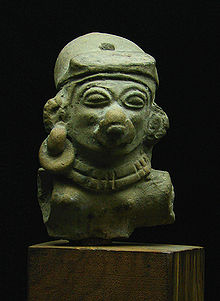 Location of the Chorrera culture | |
| Geographical range | Ecuador |
|---|---|
| Period | Formative |
| Dates | c. 1300 - 300 BCE |
| Preceded by | Machalilla |
| Followed by | Bahía, Tuncahuán |


The Chorrera culture or Chorrera tradition is a Late Formative indigenous culture that flourished between 1300 BCE and 300 BCE in Ecuador. [1] Chorrera culture was one of the most widespread cultures in pre-Columbian Ecuador, spanning the Pacific lowlands to the Andean highlands, [2] and even into southern Colombia. [1]